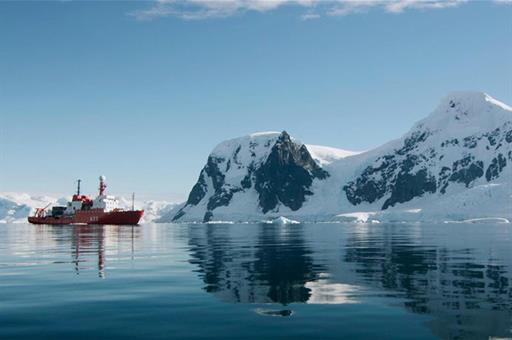Projects cover disciplines as diverse as glacier dynamics, invasive species, rock biometeorisation, volcano geochemistry, penguin ecology and biogeography.
The oceanographic research vessel (ORV) Hespérides will lead a project focused on the atmosphere-ocean relationship of aerosols, as well as providing logistical support to several of the scientific projects being run at the bases, one of them on benthic ecology, which includes diving activities.
In addition to the Spanish projects, in which scientists of other nationalities are participating, logistical support will be provided to projects in Chile, Germany, Portugal, Canada and Colombia.
The Hespérides is now providing logistical support to three scientific projects (CHALLENGE, GOLETA and PERPANTAR) that need to develop their activities in the environment of the South Shetland Islands and the Antarctic Peninsula.
Several projects are expected to operate in non-permanent camps, primarily at the Byers Peninsula International Camp maintained by Spain on Livingston Island, a two-hour sailing trip from the Juan Carlos I Spanish Antarctic Station (SAS).
During the campaign, the vessel will carry out a series of movements between the King George, Livingston and Deception Islands and the South American mainland to transfer personnel, supplies and equipment. In total, the vessel will make six crossings of the Drake Passage. The campaign will finish at the end of March when the two bases close and the ship returns to Ushuaia.
The operation of the Gabriel de Castilla Spanish Antarctic Station (SAS), located on Deception Island, which is an active volcano, includes volcanic monitoring to check that the island's seismic activity is within normal parameters, as it has been up to now.
The Byers Peninsula International Camp, located in a specially protected Antarctic area and managed by the technical staff at the Juan Carlos I SAS, is also operational and supporting two scientific projects, one Spanish (MICROPOLAR-2) and the other German.
The four time series that have been collecting data in the databases for over 25 years, as well as providing information to international networks, will also continue their activities.
Both the bases and the vessels will be supported by the Spanish State Meteorological Agency (AEMET) for weather forecasting and the National Geographic Institute for volcanic monitoring.
Spanish Antarctic Campaign
The Spanish Antarctic Campaign is a model for collaboration between different public and private institutions working on R&D&I activities, within the framework of the Spanish State Plan for Scientific and Technical Research and Innovation.
The Ministry of Science and Innovation allocates an average of EUR 10 million per year to the Antarctic research campaign. Specifically, the Ministry finances the operation and maintenance of the ship Hespérides and the expenses associated with the general logistics of the campaign, and contributes to the expenses of the Gabriel de Castilla and Juan Carlos I Spanish Antarctic Stations.
For its part, the Spanish State Research Agency funds most of the research projects. The Spanish Polar Committee coordinates the activities carried out by the different organisations during the campaigns.
The entities participating in these activities are the Marine Technology Unit of the Higher Council for Scientific Research (CSIC), which manages the Juan Carlos I SAS on Livingston Island and coordinates the general logistics of the Antarctic campaign; the Spanish Army, which manages the Gabriel de Castilla SAS on Deception Island; and the Spanish Navy, which operates the Hespérides ORV.
Both the ships and the Antarctic stations form part of the Spanish map of Singular Scientific and Technological Infrastructures (ICTS), facilities, resources or services that are exceptional within their genre, with a very high investment, maintenance and operating cost, and whose importance and strategic nature justifies them being made available to the entire R&D&I community.
Non official translation





